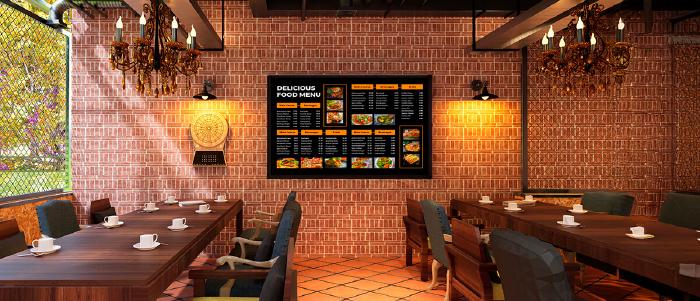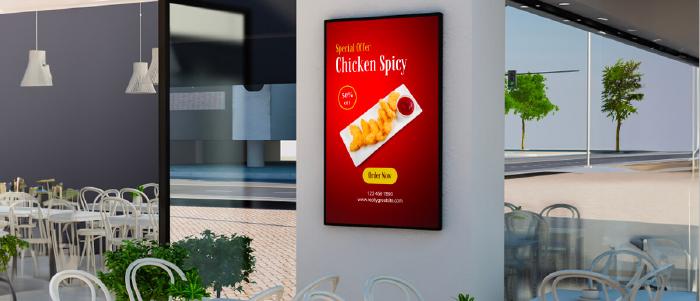
Dec 4 2024
7 min read

As entrepreneurship and startup culture have grown, food trucks have become a focal point for many aspiring business owners. This trend is supported by solid business economics, which indicate that the annual revenue for a food truck can range from $250,000 to $500,000 . Such figures demonstrate the potential profitability of this mobile dining concept.
The United States leads with more than 35,000 active food trucks , which continues to grow. However, food trucks have yet to receive global recognition and possess significant potential to create large international businesses. If you are interested in starting your food truck business, this blog provides all the necessary information.
One of the biggest reasons people start a food truck business is the relatively lower cost than opening a traditional restaurant. Additionally, people are often more cautious about the risks of failure in the food business, as it does not have a strong reputation for longevity. However, food trucks in the food industry provide lower set-up costs, flexibility, mobility, and innovation opportunities, providing an extra edge for survival and growth.
Damian Roberti , a food truck entrepreneur, said, “Food trucks can actually get more customers to them than brick-and-mortar restaurants.” Roberti also identified that food trucks offer the flexibility to cater special events, such as festivals, weddings, corporate functions, or private parties, which creates an additional revenue stream.
Customers, too, find ordering from a food truck easier and more convenient than a restaurant. Studies show that around 78% of consumers view food trucks as a popular dining option, citing convenience, diverse menu choices, and affordability as key factors driving their preference. Unlike traditional restaurants, where dining can be lengthy, food trucks offer a quick service experience, making it a win-win situation for both the business and the customer.

Food waste: Forecasting customer traffic in the food truck business is tricky. On some days, you might prepare too much food, while on slower days, prepared items might go to waste. To tackle the situation, be prepared with a different backup location to which you can switch your truck. Alternatively, you can partner with a local shelter or school to manage your overstock.
Permits and parking: The biggest challenge in running a food truck is achieving the double coincidence of having a suitable spot and obtaining a permit for legal parking. To navigate this process effectively, it’s essential to connect with a lawyer or a food truck association that can assist you in securing the necessary permits.
Weather dependency: In harsh weather like rain, snow, and heat, customers might avoid outdoor eating. You can offer discounts in the off-season to attract customers or plan to work extra in the busy months to save for seasonal downtime.
Staff management: Managing staff in a food truck setting presents unique challenges due to the small space, fast-paced environment, and fluctuating demand. Look for employees who are capable of multitasking and have experience in various aspects of food service.
Below is a step-by-step guide on how to launch successfully and grow a food truck business:
Before jumping into a food truck food business, it is important to conduct thorough market research. Analyze your local market, do a competitor analysis, and essentially understand your consumer. Check how similar businesses are performing in your location, their selling points, and areas they lack. Identify the gap and strategies that you can use to fill your concept. Additionally, location is an advantage for street food or food trucks, so try hard to be near a considerable customer base.
Moreover, you must strengthen the application of your idea. It’s essential to solidify your concept by clearly representing it through your food truck’s name. Choose a name that reflects your idea or concept, making sure it’s both unique and memorable.
You need to be unique and distinguishable. Define how you are unique. Is it the type of cuisine, your ingredients, your presentation, or the experience you offer? You can also decide the same after understanding the target audience’s unique food habits and preferences.
As the majority of food businesses collapse within a year, you need to have clarity of idea and goal regarding your food truck business. Start by creating a business plan outline that covers your mission, financial goals, and day-to-day operations. This outline will serve as your roadmap to creating a detailed business plan and help keep your vision on track. Once you are done with a clear purpose for your food truck, start working on the finances.
Plan the expenditure for the food truck, equipment, staff, ingredients marketing, etc. If you want to raise funds, then decide about the funding source, whether you want a loan or need the help of a potential investor. You need to have at least 6 months to 1 year of operating costs saved in advance. This cushion helps you handle initial business fluctuations, unexpected expenses, and seasonal downturns.
It is not possible to start a food business without having a legal permit or license. Your food truck must check all the boxes, including food safety regulations. The health department permit will ensure your food is prepared safely and your truck maintains the health and hygiene codes. The legalization process also includes a business license, mobile food vendor permit, and fire and safety inspection certificate. Most importantly, it requires a zoning permit to park in a specific area.

Once you are ready with a desirable food truck, customize it according to your brand. You can start by painting it to match your brand identity, adding graphics, and setting up a logo in the truck. Install lighting system, power, and water supply system. Most importantly, find a suitable spot to fix your food truck digital menu board so that it will be visible to all the customers standing nearby.
Check out: Unique food truck menu ideas for your business
Your menu is a core element of your success. Focus on your concept and include a menu limited to what you do best. Too many options can overwhelm customers and slow down operations, but there is no restriction in serving variety. Tryout your recipes before finalizing them for display.
Once you are done with the list of all the menu items you want to display, start designing your menu. The process is much easier with Pickcel’s Artboard, where you can design your menu board according to your brand’s identity. Additionally, Pickcel has more than 100 pre-designed digital menu templates; you can pick and customize them as per your needs.
Based on your menu, you will need ingredients. Consider working with local farms or markets for fresh ingredients. Don’t overstock yourself initially; start with limited stock and then increase as per your demand. It will ensure ingredient usage and reduce waste.
Check out: Best food truck menu board template ideas for your business

As you start your business, it’s common to feel like something is missing. To address this, conduct a test run of your food truck to assess its performance. Additionally, experiment with different timings and locations to analyze how these factors affect your results. During the experimentation process, ask for feedback from the customer. Take the time a few days or months to understand the key strengths and weak areas and improve them. Ask the customer about the food’s taste and preferences and seek improvement.
Once you start filling your shortcomings and customers start loving the taste of your food, things will be much easier. Then, your sole focus should be on expanding your business. Start with social media promotion to gain more reach and establish a brand. This will help you to gain success if you’re planning for franchising opportunities. Organize events, offer deals and discounts, and create more opportunities for customers to try your food, directly influencing your business growth.
Also read: Major benefits of food truck menu boards that helps boost your business
Most people jump into the food truck business because of its lower cost compared to a restaurant, but the investment is still significant. If starting from scratch, the cost of a new truck will start from $70,000 and can range anything . But you can get a used truck for $40,000 easily, and it can cost $5000-$10,000 more if it requires a bit of repair. Next, you will need licenses and permits depending on different state policies. However, it will cost over $25,000 , including licensing fees, fire and safety inspections, and parking permits.
Moreover, additional fees are required for the maintenance and upkeep of a food truck. Maintenance and inventory management is a repeated monthly or yearly charge ranging from $20k to $40k , varying from business to business. Overall, the estimated cost will be around $90,000 to $135,000.
Now, you have a detailed breakdown of how to start and scale your food truck business. A few golden suggestions to keep in mind: first, choose something evergreen that works year-round, like a BBQ truck or fried chicken, and add your own creativity to attract customers.
Second, capture your customers’ attention with technology, like digital menu boards and self-service kiosks. These last-minute tips can help your business stay sustainable for the long term. As a cherry on top, if you need help setting up your digital menu, try Pickcel, the industry’s leading digital signage software solutions provider.
dev





Dec 4 2024
7 min read

Nov 20 2024
8 min read

Nov 8 2024
7 min read

Nov 5 2024
8 min read
Take complete control of what you show on your digital signage & how you show it.
Start Free Trial Schedule My Demo